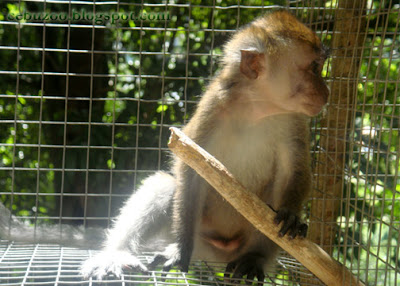The Black Ape is an extremely rare monkey at present day; They known to be the last apes of the old world. With a conservation status listed as critically endangered, they are almost near to be extinct like the dinosaurs of ancient times. Their population trend are decreasing on an alarming rate due to extensive habitat loss and hunting.
Macaca Negra is the scientific name for these primates. They have a skinless face, their coat and other body parts are entirely colored black. Their tail only measures 1 inch in length and a noticeable crest on the top side of their heads which distinguished them from all other primates. The full size adults weighs up to 10 kilograms and measures only 2 feet in height.
Macaca Negra is the scientific name for these primates. They have a skinless face, their coat and other body parts are entirely colored black. Their tail only measures 1 inch in length and a noticeable crest on the top side of their heads which distinguished them from all other primates. The full size adults weighs up to 10 kilograms and measures only 2 feet in height.
 |
| A Black ape sitting on a tree at Cebu Zoo. |
Black Apes are commonly found on the Northeastern part of Indonesia particularly in Sulawesi. Their natural habitat are on rainforests with moderate elevation. These monkeys feed on fruits and insects. They are terrestrial in nature and extremely socializing. They can be found spending time in the ground with other groups most of the time by simply sleeping, searching for food or simply sitting with other monkeys.
A Black ape can mature at the age of 3. They are promiscuous in nature. Males and females mate multiple times with several different partners. A female has a gestation period of about 170 days and usually gives birth to a single offspring.


